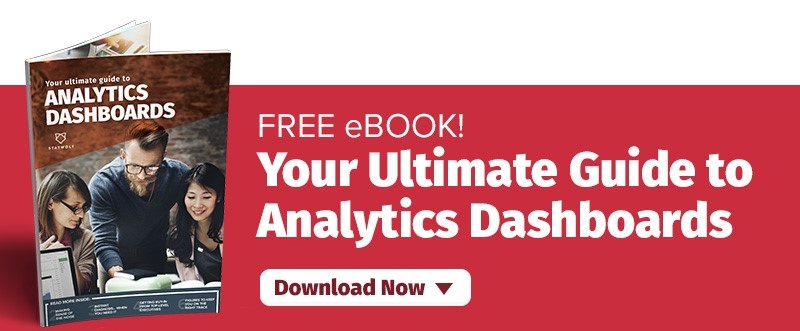Why data analytics is a key driver to digital transformation
One of the benefits of the move to digital transformation is that everything can be measured. We are moving past an age where you have to rely on someone’s gut feeling as to why something worked or didn’t work.
By 2020, there will be 50 billion sensors on Internet of Things-enabled devices around the world. That’s seven sensors for every person on the planet. And Intel predicts that that figure will quadruple by 2030 – all while the sensors create data. The secret is in interpreting that data. There’s a reason that CNBC called data analytics, “the sexiest job of the 21st Century.”
Data analytics is somewhat of a tricky phrase for anybody involved in business. Upper-level management tend to see analytics as something for the people involved in IT. Much like SEO or PPC, it’s seen as a sort of technical add-on.
Don’t get dragged into the weeds
The experts at McKinsey said that, “CEOs and other top executives, the […] people who can drive the broader business changes needed to fully exploit advanced analytics, tend to avoid getting dragged into the esoteric weeds.”
But the case for involving data analytics into the overarching strategy of a company is obvious. According to research carried out by MIT, companies that inject Big Data and analytics into their operations show productivity rates and profitability that are five to six percent higher than those of their peers.
So, what steps do businesses need to take to make sure that they use data analytics to transform their processes? The Harvard Business Review says there are three steps towards transforming a company with analytics.
Firstly, companies manage the data they produce. This means that they must identify the areas of the business that produces the most data and then identify what that data means. So, your sales team might have information about leads that didn’t convert as well as leads that did.
Both datasets are ripe for analysis.
If you aren’t analysing the data for the trends that apply, you are missing out on valuable insights for your business.
Secondly, companies must build analytics models to predict outcomes. This means modelling data to see what could happen if different variables come into play. So, if you sell two percent more or less of one particular item, how does that affect your business?
Thirdly, management within the company must possess the will to transform their organisation using the results of the data analysis. Selecting the data and analysing it is no use if management won’t use the data to make changes in the business.
TXU Energy: Using Smart Data
TXU Energy is an electricity supply company in Texas, America. After analysing its data, the company decided to place smart meters in the homes of its customers to help the customers monitor their energy usage.
However, there were unexpected benefits to the installation. Because of the smart meters, TXU Energy could access the meters once every 15 minutes rather than once a month. This eliminated the need for manual meter readings (which was one of the aims of the plan) but also gave TXU access to huge amounts of data.
Because of this data, TXU Energy could change its pricing mode to shift demand during peak hours. The company could predict its fuelling needs more accurately and didn’t need to hire in as much additional generational capacity to meet peak demand.
In the first year after analysing the data, the requirement for additional demand capacity dropped by 17 percent – meaning a saving of over $27 million for the company.
TXU was further able to shift demand: because it noticed the usage patterns of its customers, it could target individuals via SMS and email to run campaigns like, “Run your dishwasher or washing machine at night (between midnight and 6am) and get it [the electricity] for free.”
This was because TXU Energy noticed it had spare capacity at night. If customers used their appliances at night, they saved money while TXU Energy made use of its spare capacity – which was a win-win for consumer and company alike.
Are you drowning in marketing data?
If you want to transform the way your company uses its data, get in touch today.
No matter the size of your business, Statwolf can design a bespoke system tailored to your concerns that will help you minimise your downtime and make the most of your resources.
Want to know more? Download our free eBook 'Your Ultimate Guide to Analytics Dashboards'.



